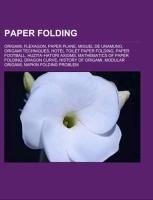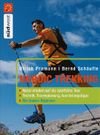
Paper folding
Source: Wikipedia. Pages: 54. Chapters: Origami, Flexagon, Paper plane, Miguel de Unamuno, Origami techniques, Hotel toilet paper folding, Paper football, Huzita-Hatori axioms, Mathematics of paper folding, Dragon curve, History of origami, Modular origami,... Viac o knihe
Produkt je dočasne nedostupný
16.46 €
bežná cena: 18.70 €
O knihe
Source: Wikipedia. Pages: 54. Chapters: Origami, Flexagon, Paper plane, Miguel de Unamuno, Origami techniques, Hotel toilet paper folding, Paper football, Huzita-Hatori axioms, Mathematics of paper folding, Dragon curve, History of origami, Modular origami, Napkin folding problem, Origamic architecture, OrigamiUSA, Washi, Thousand origami cranes, Tamatebako, Matthew T. Mason, Paper plane launched from space, Chinese paper folding, Paper craft, Sonobe, Britney Gallivan, Regular paperfolding sequence, Rigid origami, Kusudama, Origami paper, Paper fortune teller, Action origami, Masu, List of origamists, Wet-folding, Miura fold, Iris folding, Fold-and-cut theorem, Teabag folding, Troublewit, Shide, Polytetrahedron, Map folding, FPG-9, Paper popper, Humiaki Huzita, Crease pattern, Pureland origami, British Origami Society, Kawasaki's theorem, Origami-bonsai, Bug Wars, Backcoating, Noshi. Excerpt: A paper plane, paper aeroplane (UK), paper airplane (US), paper glider, paper dart or dart is a toy aircraft, usually a glider made out of paper or paperboard; the practice of constructing paper planes is sometimes referred to as aerogami (Japanese: kamihikoki), after origami, the Japanese art of paper folding. The origin of folded paper gliders is generally considered to be of Ancient China, though there is equal evidence that the refinement and development of folded gliders took place in equal measure in Japan. Certainly, manufacture of paper on a widespread scale took place in China 500 BCE, and origami and paper folding became popular within a century of this period, approximately 460-390 BCE. It is impossible to ascertain where and in what form the first paper aircraft were constructed, or even the first paper plane's form. For over a thousand years after this, paper aircraft were the dominant man-made heavier-than-air craft whose principles could be readily appreciated, though thanks to their high drag coefficients, not of an exceptional performance when gliding over long distances. The pioneers of powered flight have all studied paper model aircraft in order to design larger machines. Da Vinci wrote of the building of a model plane out of parchment, and of testing some of his early ornithopter, an aircraft that flies by flapping wings,and parachute designs using paper models. Thereafter, Sir George Cayley explored the performance of paper gliders in the late 19th century. Other pioneers, such as Clement Ader, Prof. Charles Langley, and Alberto Santos Dumont often tested ideas with paper as well as balsa models to confirm (in scale) their theories before putting them into practice. The most significant use of paper models in aircraft designs were by the Wright brothers between 1899 and 1903, the date of the first powered flight from Kill Devil Hills, by the Wright Flyer. The Wrights used a wind tunnel to gain knowledge of the forces which could be used to cont
- Vydavateľstvo: Books LLC, Reference Series
- Formát: Paperback
- Jazyk:
- ISBN: 9781156559970


 Anglický jazyk
Anglický jazyk 
 Nemecký jazyk
Nemecký jazyk 







